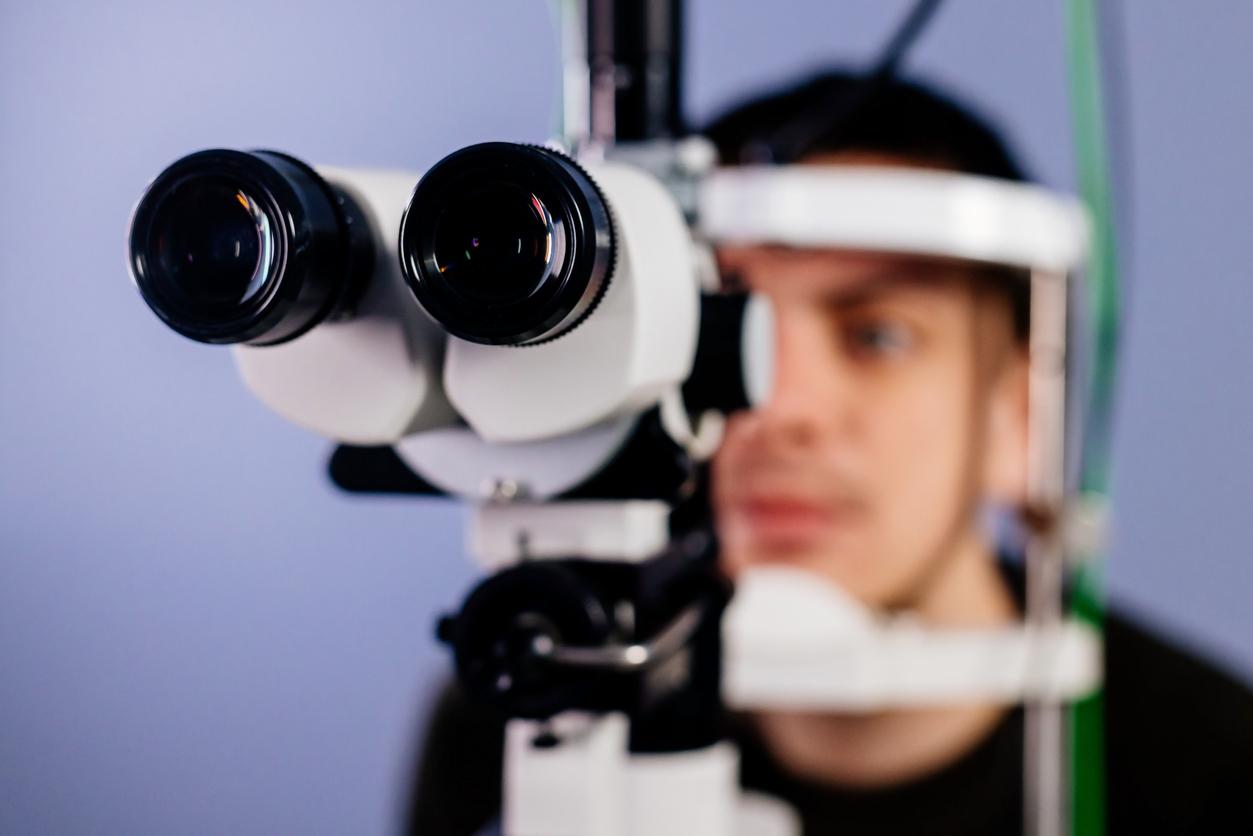It is discreet, transparent and it is often when it becomes cloudy and no longer lets light penetrate that we discover its existence. Because, if the cornea is damaged, blindness threatens.
Thin film that covers the eye, it can be altered by various causes: diseases such as keratoconus, characterized by deformation of the eye, infections such as herpes, accidents, burns … It can also lose its transparency after a surgical operation. In France, 8,000 people would need a transplant.
Lamellar graft: we operate much earlier
“Before, we waited until the cornea is almost whitened to propose a transplant, explains Prof. Eric Gabison, who performs 10% of corneal transplants in France. Today, with the lamellar transplant, we operate much earlier.”
Developed ten years ago, this ultra sophisticated technique involves grafting not a total cornea, but only the thin altered layer. In 80% of cases, it is the endothelium, a 10 micron tissue, made up of a single thickness of cells, that the surgeon slips through a 2.2 mm incision inside the cornea to replace diseased tissue. To fix this slat and adjust it, it injects micro air bubbles. A work of goldsmith.
The advantages are major: the operation is performed under local anesthesia, the patient leaves the same day, the risk of rejection is minimal (1 to 2%, against 10 to 30% for the total transplant), recovery of acuity visual is much better (8 to 10/10) and faster.
It is also possible to graft only the stroma, the intermediate layer of the cornea between the epithelium, on the outside, and the endothelium, in depth. Even if the cornea is a poorly immunogenic tissue, there is a lack of solutions for patients who have had a rejection after a first transplant, or affected by the herpes virus.
Stem cell injection: the future?
New approaches are under study. Thanks to the Pax6 gene, researchers are able to transform stem cells from the skin or bone marrow into transparent cells.
• Other work is aimed at making corneal tissue resistant to the herpes virus: a gene encoding an enzyme that cuts this virus is integrated into cells. These techniques have already been proven on animals.
• The Adolphe de Rothschild Foundation is about to embark on a first clinical trial aimed at regenerating the transparency of the cornea by injecting modified mesenchymal stem cells into patients who have suffered eye burns. Objective: to repair the eye in situ.
• “Keratoprostheses” are also being studied: these artificial corneas would be colonized by stem cells before implantation, in order to be better tolerated.
Read also :
- A 4 D cornea that adapts to the shape of the eye
- A contact lens that treats lesions in the eye
- Restore sight with a film placed on the cornea














